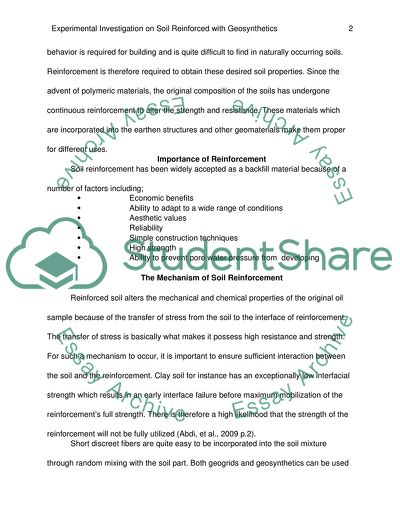Cite this document
(Experimental investigation on soil reinforced with geosynthetics Literature review Example | Topics and Well Written Essays - 4250 words, n.d.)
Experimental investigation on soil reinforced with geosynthetics Literature review Example | Topics and Well Written Essays - 4250 words. https://studentshare.org/engineering-and-construction/1864689-experimental-investigation-on-soil-reinforced-with-geosynthetics
Experimental investigation on soil reinforced with geosynthetics Literature review Example | Topics and Well Written Essays - 4250 words. https://studentshare.org/engineering-and-construction/1864689-experimental-investigation-on-soil-reinforced-with-geosynthetics
(Experimental Investigation on Soil Reinforced With Geosynthetics Literature Review Example | Topics and Well Written Essays - 4250 Words)
Experimental Investigation on Soil Reinforced With Geosynthetics Literature Review Example | Topics and Well Written Essays - 4250 Words. https://studentshare.org/engineering-and-construction/1864689-experimental-investigation-on-soil-reinforced-with-geosynthetics.
Experimental Investigation on Soil Reinforced With Geosynthetics Literature Review Example | Topics and Well Written Essays - 4250 Words. https://studentshare.org/engineering-and-construction/1864689-experimental-investigation-on-soil-reinforced-with-geosynthetics.
“Experimental Investigation on Soil Reinforced With Geosynthetics Literature Review Example | Topics and Well Written Essays - 4250 Words”. https://studentshare.org/engineering-and-construction/1864689-experimental-investigation-on-soil-reinforced-with-geosynthetics.


